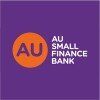

Bharat Oman Refineries




20+ Bharat Oman Refineries Interview Questions and Answers
Q1. why Rockwell hardness is more preferred over Brinell hardness ? how Rockwell number is given(description of Rockwell test)
Rockwell hardness is more preferred over Brinell hardness due to its higher accuracy, versatility, and ease of use.
Rockwell hardness provides a more accurate measurement of hardness compared to Brinell hardness.
Rockwell hardness is more versatile as it can be used for a wide range of materials, including both hard and soft metals.
The Rockwell test is easier to perform and requires less time compared to the Brinell test.
Rockwell hardness is expressed as a number on a scale, su...read more

Q2. which machining process is used for surface finishing operation and what is their avg height of roughness?
The machining process used for surface finishing operations is called grinding.
Grinding is a process that uses an abrasive wheel to remove material from a workpiece's surface.
It is commonly used to achieve a smooth and flat surface finish.
The average height of roughness, also known as Ra value, depends on various factors such as the grinding wheel grit size, feed rate, and material being ground.
For example, in precision grinding, the Ra value can be as low as 0.1 micrometers....read more

Q3. curie temperature and define the temperature zone in which iron-carbon alloy behaves feromagnetic ,para-magnetic etc
Curie temperature is the temperature at which a material loses its ferromagnetic properties. Iron-carbon alloy exhibits different magnetic behaviors in different temperature zones.
Curie temperature is the temperature at which a material transitions from being ferromagnetic to paramagnetic.
For iron-carbon alloy, the Curie temperature is around 770°C.
Below the Curie temperature, iron-carbon alloy behaves as ferromagnetic, meaning it has a permanent magnetic moment.
Above the Cur...read more

Q4. what happens when water is filled in compressor and air is filled in pump?
When water is filled in a compressor and air is filled in a pump, it can lead to damage and malfunction of both the compressor and the pump.
Water in a compressor can cause corrosion and damage to the internal components, reducing its efficiency and lifespan.
Air in a pump can cause cavitation, which is the formation and collapse of air bubbles in the pump, leading to damage and reduced performance.
Both the compressor and the pump may experience overheating and increased energy...read more

Q5. what is welding process? give the example of them which is used in most of industry
Welding is a process of joining two or more metal pieces together using heat and pressure.
Welding is commonly used in industries like construction, automotive, aerospace, and manufacturing.
Some popular welding processes include arc welding, MIG welding, TIG welding, and spot welding.
Arc welding uses an electric arc to create heat and melt the metal pieces together.
MIG welding uses a wire electrode to create an electric arc and feed filler material into the joint.
TIG welding u...read more

Q6. types of impeller of centrifugal pump and their material which is used
There are various types of impellers used in centrifugal pumps, each made of different materials.
Closed impeller: used for high-pressure applications and made of materials like stainless steel or cast iron.
Open impeller: used for handling liquids with solids and made of materials like bronze or stainless steel.
Semi-open impeller: used for applications where solids may be present and made of materials like cast iron or stainless steel.
Radial impeller: used for low flow and hig...read more

Q7. what is NPSH ? how they affect the performance of pump?
NPSH stands for Net Positive Suction Head. It is a measure of the pressure available at the suction of a pump.
NPSH is the difference between the total suction head and the vapor pressure of the pumped liquid.
It determines the ability of a pump to avoid cavitation, which can damage the pump and reduce its performance.
Insufficient NPSH can lead to reduced flow rate, decreased efficiency, and increased noise and vibration.
NPSH can be improved by increasing the pressure at the pu...read more

Q8. why reciprocating pump is called positive displacement pump?
Reciprocating pump is called positive displacement pump because it displaces a fixed volume of fluid with each stroke.
Reciprocating pump uses a piston or plunger to create a reciprocating motion, which displaces a fixed volume of fluid with each stroke.
The displacement of fluid is achieved by trapping the fluid in a chamber and then forcing it out through a discharge valve.
Unlike centrifugal pumps, reciprocating pumps do not rely on the kinetic energy of the fluid, but rather...read more


Q9. what is buckling ? difference between column and struts
Buckling is the sudden failure of a structural member under compression. Columns and struts are both compression members, but differ in their end conditions.
Buckling is a failure mode that occurs when a compression member, such as a column or strut, fails due to excessive compressive forces.
It is characterized by a sudden lateral deflection or bending of the member.
Columns are vertical compression members that are usually fixed at both ends, while struts are inclined or horiz...read more

Q10. different theory of failure and which theory is applicable for ductile and brittle material
Different theories of failure and their applicability for ductile and brittle materials.
Theories of failure include maximum shear stress theory, maximum distortion energy theory, and maximum normal stress theory.
For ductile materials, the maximum shear stress theory is applicable as it considers the yield strength and shear strength.
For brittle materials, the maximum normal stress theory is applicable as it considers the tensile strength and compressive strength.
The maximum d...read more

Q11. why inlet valve is larger in size w.r.t exhaust valve
The inlet valve is larger in size compared to the exhaust valve to optimize the flow of air/fuel mixture into the combustion chamber.
The larger size of the inlet valve allows for a greater volume of air/fuel mixture to enter the combustion chamber during the intake stroke.
This helps in achieving better combustion efficiency and power output.
The exhaust valve, on the other hand, is smaller in size as it only needs to allow the combustion by-products to exit the combustion cham...read more

Q12. what is pump? classification of pump
A pump is a mechanical device used to move fluids from one place to another. It can be classified based on its principle of operation.
Pumps are used in various industries such as water supply, oil and gas, chemical processing, and wastewater treatment.
Classification of pumps can be based on the type of fluid being pumped (e.g., water pump, oil pump), the principle of operation (e.g., centrifugal pump, positive displacement pump), and the specific application (e.g., submersibl...read more

Q13. gives example of pelton wheel, francis turbine and kaplan turbine in nearer to you also talk about their capacity
Pelton wheel, Francis turbine, and Kaplan turbine are types of hydraulic turbines used for generating electricity.
Pelton wheel is an impulse turbine used for high head applications.
Francis turbine is a reaction turbine used for medium head applications.
Kaplan turbine is a propeller-type reaction turbine used for low head applications.
Pelton wheel has a capacity range of 1 MW to 200 MW.
Francis turbine has a capacity range of 10 kW to 800 MW.
Kaplan turbine has a capacity range ...read more

Q14. what is turbine? difference between impulse and reaction turbine?
A turbine is a device that converts the energy from a fluid into mechanical energy. Impulse and reaction turbines differ in how they convert this energy.
A turbine is a machine that extracts energy from a fluid, such as steam, gas, or water, and converts it into rotational motion.
Impulse turbines work by directing a high-velocity jet of fluid onto the blades of the turbine, causing it to rotate.
Examples of impulse turbines include Pelton wheels and Turgo turbines.
Reaction turb...read more

Q15. which pump are used for pumping soap solution?
Soap solution can be pumped using various types of pumps depending on the application.
Diaphragm pumps are commonly used for pumping soap solution.
Centrifugal pumps can also be used for pumping soap solution.
Peristaltic pumps are suitable for pumping soap solution with high viscosity.
Air-operated double diaphragm pumps are often used in industrial settings for pumping soap solution.
Progressive cavity pumps can handle soap solution with solids or abrasive particles.

Q16. stress -strain diagram significance and define each point of stress-strain diagram
The stress-strain diagram is a graphical representation of the relationship between stress and strain in a material.
The stress-strain diagram shows how a material deforms under applied stress.
It helps in understanding the mechanical properties of a material.
The diagram consists of various points that represent different stages of deformation.
The elastic limit point represents the maximum stress a material can withstand without permanent deformation.
The yield point is where th...read more

Q17. what is principal stress and their significance?
Principal stress refers to the maximum and minimum stresses experienced by a material. They are significant in determining material failure and structural stability.
Principal stress is the maximum and minimum stress experienced by a material in a given loading condition.
They are perpendicular to each other and act along the principal planes.
The principal stress values help in determining the failure criteria of a material.
They are crucial in analyzing the structural stability...read more

Q18. explain iron carbon equilibrium diagram ,different invariant reaction in different temperature zone
The iron-carbon equilibrium diagram illustrates the phases and transformations of iron-carbon alloys at different temperatures.
The diagram shows the relationship between carbon content, temperature, and the phases of iron-carbon alloys.
It helps in understanding the behavior of steel and cast iron.
Different temperature zones on the diagram correspond to different invariant reactions.
In the ferrite-pearlite zone, the reaction involves the transformation of austenite into pearli...read more

Q19. slenderness ratio definition and classification of column on the basis of slenderness ratio
The slenderness ratio is a measure of the stability of a column. It is defined as the ratio of the effective length to the least radius of gyration.
Slenderness ratio = Effective length / Least radius of gyration
It determines the buckling behavior of a column under compressive loads
Columns can be classified as short, intermediate, or long based on their slenderness ratio
Short columns have a slenderness ratio less than a certain critical value
Intermediate columns have a slender...read more

Q20. definition of bending and assumption of bending theory ?
Bending is a process of applying a force to a material, causing it to deform and assume a curved shape.
Bending is a common phenomenon in engineering and construction.
It occurs when a material is subjected to an external force, causing it to bend or flex.
Bending theory is a set of principles and equations used to analyze and predict the behavior of bent materials.
Assumptions of bending theory include linear elasticity, small deformations, and homogeneous materials.
Bending theo...read more

Q21. draw rankine cycle on P-V and T-S diagram
The Rankine cycle is a thermodynamic cycle used in power plants to generate electricity.
The Rankine cycle consists of four main components: a pump, a boiler, a turbine, and a condenser.
On a P-V diagram, the cycle starts at point 1 with the pump, where the working fluid is compressed to a high pressure.
From point 1 to point 2, the fluid is heated in the boiler, resulting in a phase change from liquid to vapor.
The vapor then enters the turbine at point 2 and expands, doing work...read more

Q22. difference between torsion and bending?
Torsion and bending are two different types of forces that act on structures.
Torsion is a twisting force that causes an object to rotate around its axis.
Bending is a force that causes an object to deform by curving or flexing.
Torsion primarily affects cylindrical objects, while bending affects beams or other elongated structures.
Torsion can be seen in the twisting of a screwdriver or the rotation of a helicopter rotor.
Bending can be observed in the flexing of a diving board o...read more

Q23. what is Molier diagram
A Moliere diagram is a graphical representation of the relationships between different elements in a system or process.
Moliere diagrams are often used in project management to visualize the flow of tasks and dependencies.
They can also be used in software development to illustrate the relationships between different modules or components.
Moliere diagrams can help identify bottlenecks, optimize processes, and improve overall efficiency.
They are named after the French playwright...read more

Q24. difference between nozzle and diffuser?
Nozzle and diffuser are both fluid flow devices, but they have opposite functions.
Nozzle is a device that increases the velocity of a fluid by decreasing its cross-sectional area.
Diffuser is a device that decreases the velocity of a fluid by increasing its cross-sectional area.
Nozzle is used to accelerate the flow of fluid, while a diffuser is used to decelerate the flow.
Nozzle is commonly used in applications like rocket engines, jet engines, and spray nozzles.
Diffuser is co...read more

Q25. practical implementations of OS?
Operating systems have practical implementations in various areas such as resource management, process scheduling, memory management, and file systems.
Resource management: OS manages and allocates system resources like CPU, memory, and I/O devices.
Process scheduling: OS determines the order and priority of executing processes.
Memory management: OS handles memory allocation and deallocation for efficient usage.
File systems: OS provides a hierarchical structure to organize and ...read more

Q26. definition of Enthalpy and entropy
Enthalpy is the heat content of a system, while entropy is a measure of disorder or randomness.
Enthalpy is a thermodynamic property that accounts for the heat energy of a system.
It is represented by the symbol H and is measured in units of energy (e.g., joules).
Enthalpy change (∆H) is the difference in enthalpy between the products and reactants in a chemical reaction.
Entropy is a measure of the degree of randomness or disorder in a system.
It is represented by the symbol S an...read more

Q27. what is compounding?
Compounding is the process of earning interest on both the initial principal and the accumulated interest.
Compounding refers to the concept of reinvesting the interest earned on an investment to generate additional earnings.
It involves the exponential growth of an investment over time.
The more frequently compounding occurs, the faster the investment grows.
Compound interest can be calculated using the formula A = P(1 + r/n)^(nt), where A is the final amount, P is the principal...read more

Q28. selection criteria of pump
The selection criteria of a pump depend on factors such as flow rate, head, efficiency, power consumption, and cost.
Flow rate: Determine the required flow rate for the application.
Head: Consider the total head or pressure required to overcome in the system.
Efficiency: Look for a pump with high efficiency to minimize energy consumption.
Power consumption: Evaluate the power requirements and choose a pump accordingly.
Cost: Consider the initial cost, maintenance cost, and lifecyc...read more





Interview Process at Bharat Oman Refineries

Top Interview Questions from Similar Companies









Reviews
Interviews
Salaries
Users/Month












